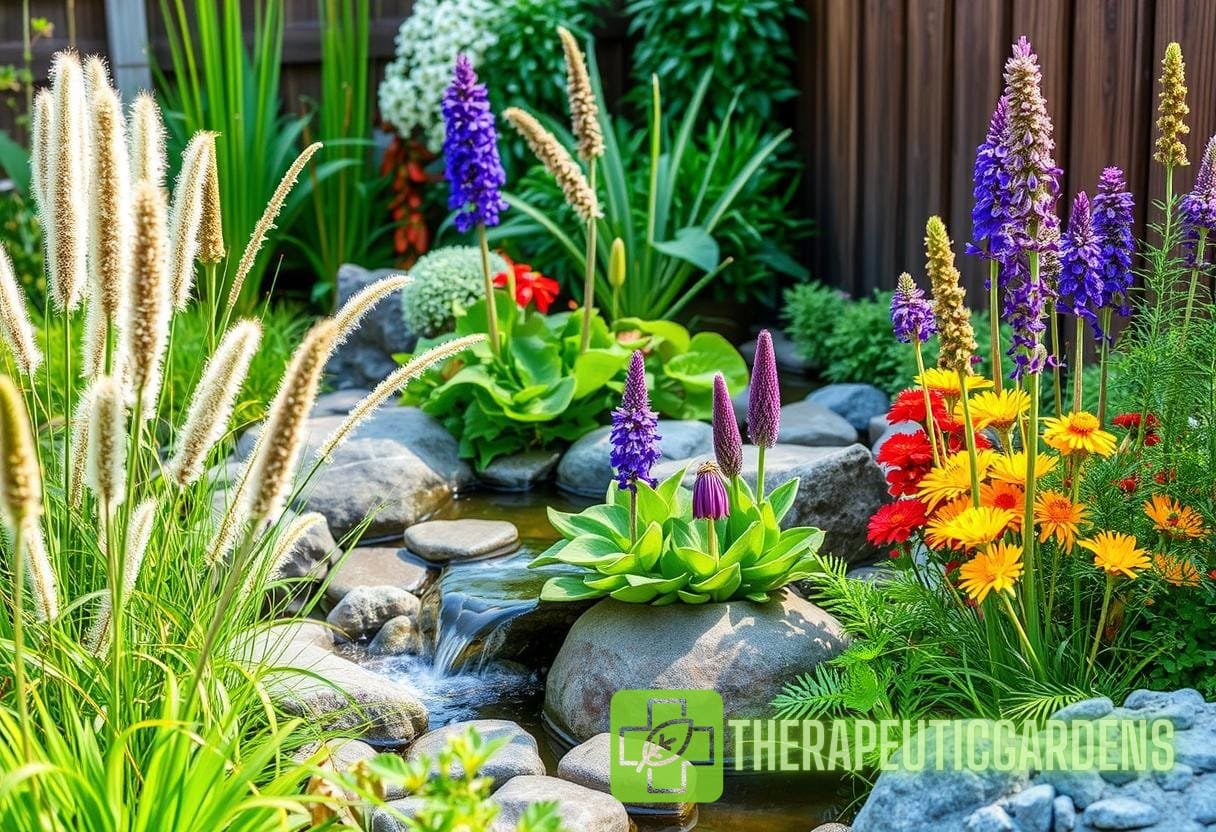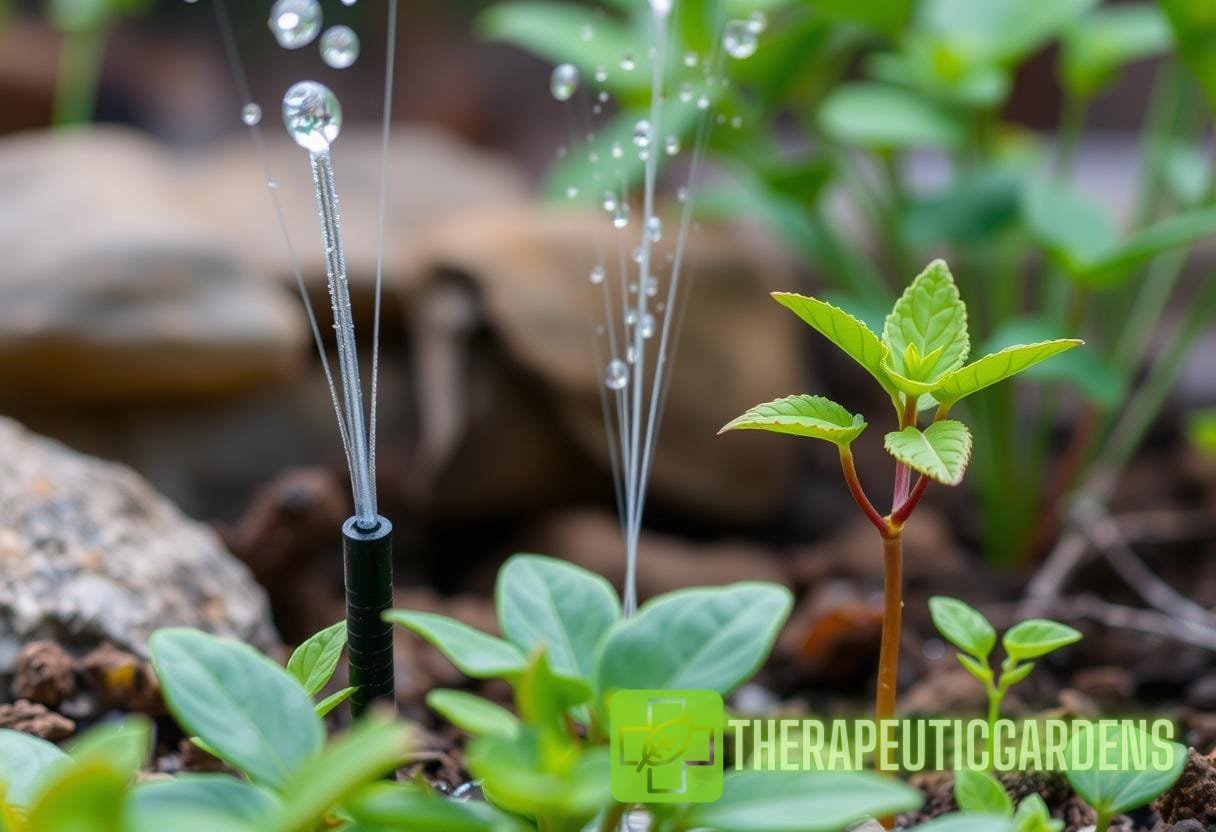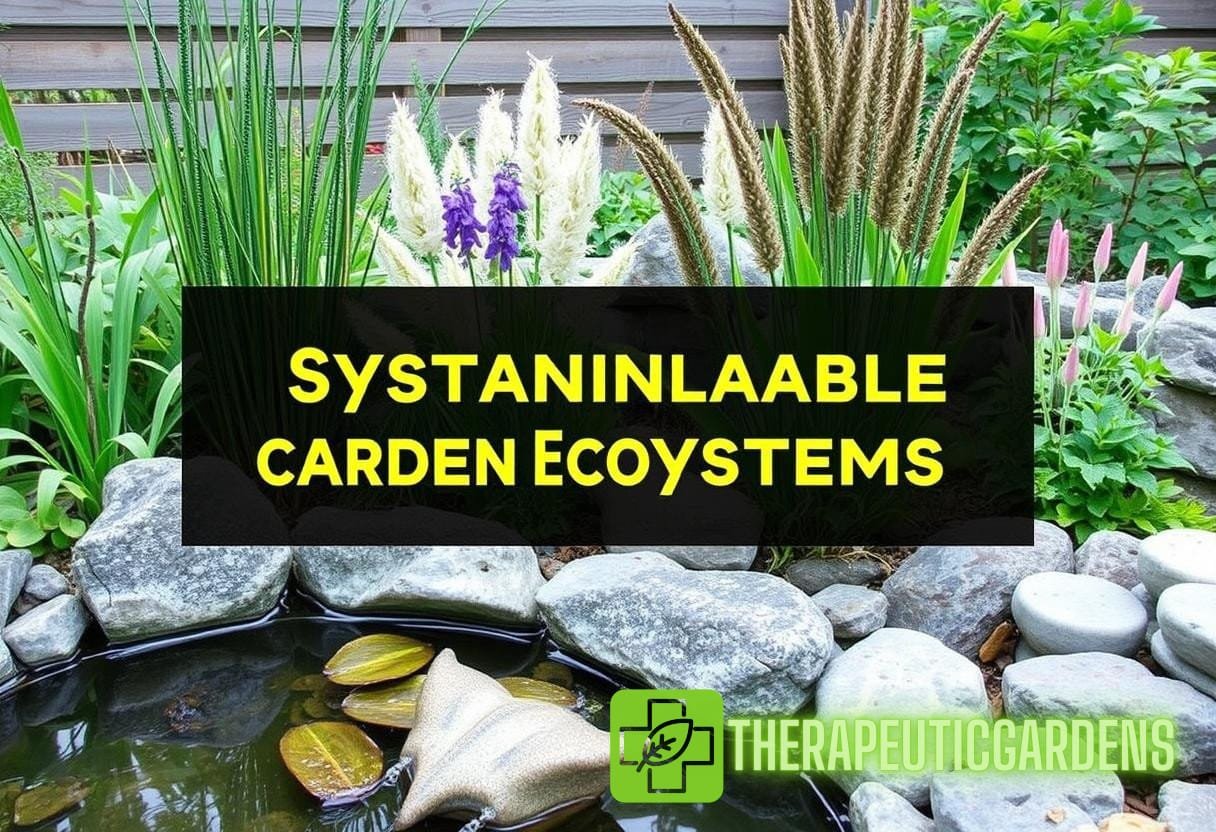Introduction to Symbiotic Ecosystems in Garden Design
In the quest for sustainable living, creating and maintaining sustainable garden ecosystems has emerged as an essential practice for gardeners and landscape designers. This guide explores the intricate relationship between water features and native flora, emphasizing the importance of symbiotic ecosystems in achieving garden resilience. By integrating these components, you can design a thriving environment that supports biodiversity, conserves water, and promotes ecological balance.
The Importance of Symbiotic Ecosystems
Understanding symbiotic ecosystems is crucial for gardeners. These ecosystems thrive on the mutual benefits between different organisms, including plants, animals, and microorganisms. Some defining features of these ecosystems include:
- Biodiversity: A rich variety of species contributes to ecosystem stability.
- Resource Sharing: Organisms share nutrients and energy, enhancing overall health.
- Feedback Loops: Interactions among species promote natural resilience against disturbances.
By cultivating a sustainable garden ecosystem, you not only create beauty but also contribute to the health of the environment. Implementing native flora and water features plays a pivotal role in this interdependent relationship.
Understanding Native Flora
Native plants are species that have evolved in a specific region over thousands of years. They are uniquely adapted to the local climate and soil conditions, making them vital for creating sustainable garden ecosystems.
Benefits of Native Flora
Incorporating native plants offers numerous ecological benefits:
- Habitat for Wildlife: Native plants provide food and shelter for local wildlife.
- Soil Health: They improve soil stability and prevent erosion through deep root systems.
- Pest Management: Native flora attracts beneficial insects, reducing the need for chemical pesticides.
Statistics indicate that gardens featuring native plants can support significantly higher levels of biodiversity compared to those using non-native species. According to the National Wildlife Federation, home landscapes that utilize native plants can increase wildlife abundance by up to 50%.
Integrating Water Features
Water features are essential components of sustainable garden ecosystems. They serve not only aesthetic purposes but also ecological functions that enhance the garden’s resilience.
Types of Water Features
There are various types of water features that can be incorporated into garden designs:
- Ponds: Provide habitats for aquatic life and help regulate microclimates.
- Rain Gardens: Capture and filter stormwater, reducing runoff and improving water quality.
- Bird Baths: Offer drinking and bathing spots for birds, promoting wildlife visits.
- Fountains: Create movement and sound while aerating water, benefiting aquatic organisms.
Using elements like ponds and rain gardens not only enhances beauty but also fosters a symbiotic relationship with native flora. For example, native wetland plants can help filter pollutants from water, creating a healthier habitat for fish and insects.
Designing Your Sustainable Garden Ecosystem
When designing a sustainable garden ecosystem, consider the following steps:

1. Assess Your Site
Before planting, evaluate your garden’s sunlight, soil quality, and moisture levels. Identify existing native flora and fauna, including any potential ecological challenges such as invasive species.
2. Choose Native Plants
Select native plants that thrive in your region. Resources like the Native Plant Finder can help you identify suitable species.
3. Incorporate Water Features
Add water features that align with your garden’s overall goals. A pond can attract frogs, while a rain garden can help absorb stormwater and add lush greenery. Make sure any water features you build are designed with sustainability in mind to promote ecosystem health.
4. Create Layers of Planting
Design your garden with various layers of flora (canopy, understory, and ground cover) to enhance habitat complexity. This diversity attracts a wide range of wildlife and improves the resilience of your ecosystem.
5. Implement Maintenance Practices
Regularly monitor plant health and ecosystem balance. Sustainable practices such as organic pest control, mulching, and composting will help your garden thrive with minimal input.
Real-World Examples of Sustainable Garden Ecosystems
Several successful projects exemplify the effectiveness of incorporating native flora and water features for sustainable garden ecosystems:
Case Study: The Brooklyn Botanic Garden
The Brooklyn Botanic Garden implemented a water-garden design that includes several native plant species. The garden’s emphasis on biodiversity has transformed its landscape into a stable ecosystem that supports various pollinators. Data shows that the introduction of native plants increased pollinator activity by an impressive 60%.
Case Study: The Lady Bird Johnson Wildflower Center
At the Lady Bird Johnson Wildflower Center in Austin, Texas, the integration of native plants with water features exemplifies sustainable design. The center showcases how water conservation measures, including rain gardens and native plant landscaping, have led to a 30% reduction in overall water usage.
Enhancing Soil Health for Your Ecosystem
Healthy soil is vital for a thriving garden ecosystem. The following practices contribute to soil health:
Composting
Composting organic waste replenishes soil nutrients and enhances microbial activity. A study by the UC Davis Composting Program reported that compost can increase soil fertility by more than 25%.
Mulching
Using organic mulch retains moisture, suppresses weeds, and supports beneficial microorganisms. Studies show that mulched soils are more resilient during periods of drought.
Crop Rotation
Rotating plant families each season prevents soil depletion and interrupts pest cycles. This practice can increase soil health and biodiversity considerably.
Water Conservation Techniques

Water conservation is a fundamental aspect of designing sustainable garden ecosystems. Implement the following techniques to promote efficient water use:
Drip Irrigation
Consider installing a drip irrigation system, which delivers water directly to plant roots. This method can reduce water usage by up to 50% compared to traditional sprinkler systems.
Rainwater Harvesting
Create a rainwater harvesting system to collect and store rainwater for later use. Rain barrels can collect thousands of gallons of water annually, reducing reliance on municipal water supplies.
Educating the Community
Educating others about the benefits of sustainable garden ecosystems can have a ripple effect, increasing awareness and encouraging broader adoption of these practices. Hosting workshops, creating informative content, and partnering with local organizations can amplify your impact.
Local Outreach Programs
Consider collaborating with local schools and community gardens to promote native species planting. Programs focused on sustainable gardening practices create community engagement and encourage observable changes in local ecosystems.
Challenges and Solutions in Sustainable Gardening
While creating a sustainable garden ecosystem is rewarding, it is essential to identify potential challenges:
Pest Management
Invasive pests can threaten the balance of your ecosystem. Instead of chemical treatments, consider the following strategies:
- Encourage Beneficial Insects: Plant and provide habitats that attract beneficial insects, such as ladybugs.
- Natural Predators: Introduce natural predators in the ecosystem to keep pest populations in check.
Climate Change
Adapting to climate change requires flexible design and plant selection. Choose plants that can tolerate extreme weather and plan for potential drought conditions.
Integrating Technology into Sustainable Gardening
Modern technology can enhance sustainable garden ecosystem management. Consider utilizing the following tools:
Garden Apps
Apps that assist in plant identification, pest management, or water usage tracking can streamline garden management.
Smart Irrigation Systems
Smart irrigation systems can adapt to weather conditions, ensuring efficient water usage and conservation.
Conclusion: A Step Towards Sustainability
By creating sustainable garden ecosystems through the integration of water features and native flora, gardeners contribute to ecological health and biodiversity. These practices not only enhance aesthetic appeal but also lead to a more resilient environment capable of thriving in an ever-changing climate.



